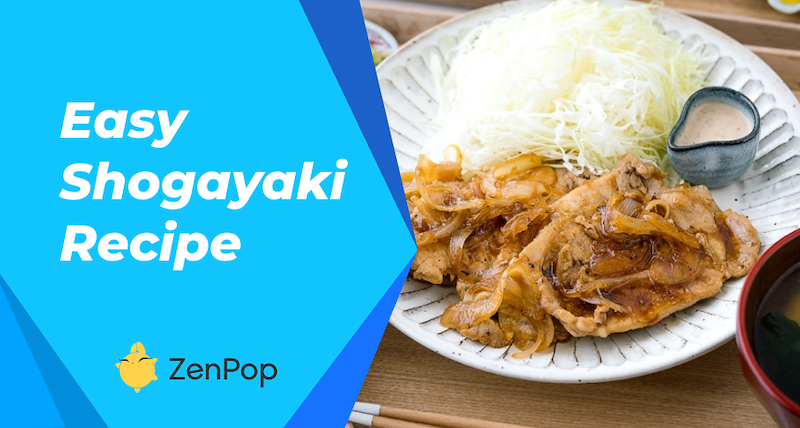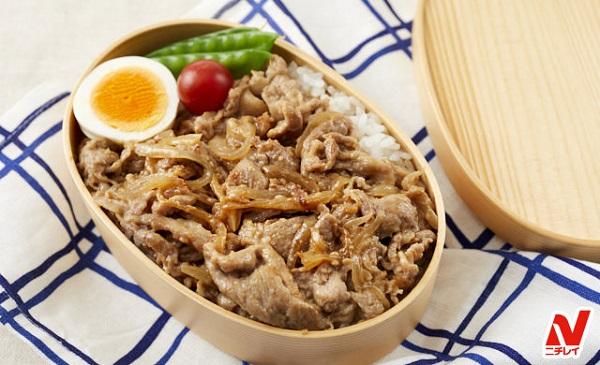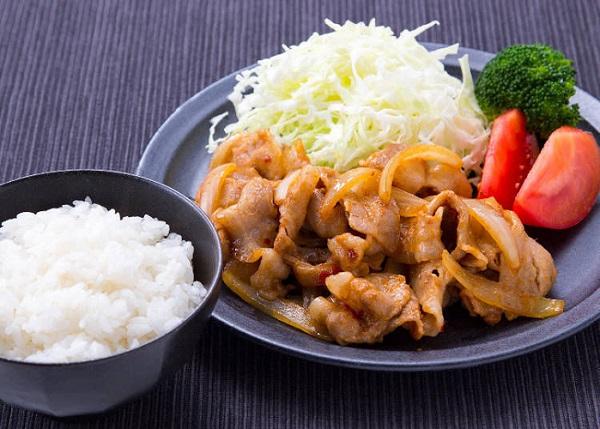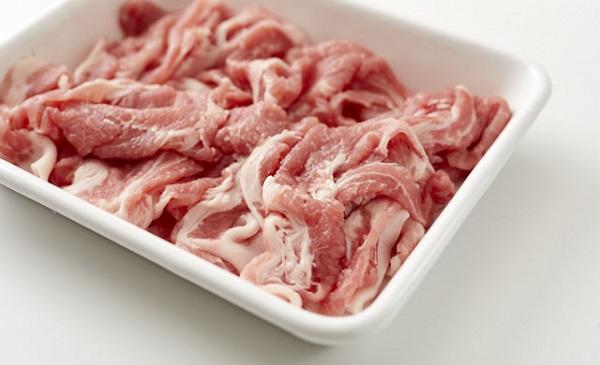
</title><meta name="robots" content="noindex">Easy Shogayaki Recipe: How to Make Japanese Ginger Pork
Japan has a wealth of delicious pork dishes and among the easiest ones to make is a dish called butaniku no shogayaki (豚肉の生姜焼き) or Japanese ginger pork. The classic home-cooked dish comes with potato starch, enabling the meat to fully absorb the flavor of the sauce.
This post will discuss different facts about shogayaki. We’ll give you a no-brainer recipe that’s perfect for quick-fix dinners.
What is shogayaki?

Shogayaki in a bento
Shogayaki is a Japanese dish made of fried pork with a sauce made of ginger and soy sauce. It is a popular dish in the land of the rising sun and can be found in both restaurants and home kitchens. It consists of two words. The first one is shoga (生姜), which means ginger and yaki (焼き), which means to fry or grill.
What makes the shogayaki amazing is that it’s a flavorful dish you can quickly prepare. You don’t need to marinade it to achieve a rich taste. It’s delicious as a hot dinner dish or a cold bento. It’s an excellent otsumami (food paired with alcoholic drinks) too!
You can easily adjust the recipe according to your taste. For example, you have the option to add garlic or onion. Others prefer bite-sized meat pieces, and some want them served as steaks.
Easy Shogayaki (Ginger Pork) Recipe

- Prep Time: 20 minutes
- Servings: 2
Ingredients:
- 200 g pork loin (6 pieces, thinly sliced)
- Two pinches of salt and pepper
- 2 teaspoons potato starch
- Oil
- Sesame seeds
Ginger Sauce Ingredients:
- 1 tablespoon Japanese soy sauce
- 2 teaspoons cooking sake
- 2 teaspoons mirin
- 2 teaspoons grated ginger *
- 1 teaspoon sugar
*The Japanese either manually grate their ginger or use products like House Food’s Oroshi Shoga.
Garnish:
- Cabbage
- Cherry tomato
Instructions:
- Cut the cabbage into shreds.
- Create some slits on the white areas (the connective tissue) of the meat. Lay the slices flat. Sprinkle the salt and pepper as well as the potato starch and do so on each side. Feel free to adjust the salt according to taste.
- Get a small bowl and mix all the ginger sauce ingredients together.
- Place a frying pan over medium heat. Thinly spread the oil over the pan. Then fry the pork slices in batches. Once you notice the brown color on each side, add some ginger sauce and sauté the meat for about three minutes. Once the sauce nicely soaks into the pork, remove from heat.
- Garnish your dish with shredded cabbage and cherry tomatoes. Then sprinkle a good amount of sesame seeds on the meat.
Tips for Making Japanese Ginger Pork

Suggested Pork Thickness
If you have a Japanese grocery store nearby, it’s easy to get the specific cut for the shogayaki. Ask the store staff for meat labeled for shogayaki use. If there are no Japanese groceries around, try your Asian grocery store. They might have thin pork slices used for hot pot dishes.
The recommended thickness is around ⅛ of an inch (or 3 mm). If you don’t have the option to buy pork this thin, you can always manually slice your pork loin. To do so, follow the steps below.
How to Thinly Slice Your Pork Loin
- Place a block of pork loin in a freezer-safe zipper bag. Remove most of the air inside and then seal.
- Put it inside your freezer. Leave it there for about one to two hours. The duration needed will depend on the amount of meat and the amount of fat.
- Take out the meat from the fridge, which should be soft enough for the knife to cut through.
- Use a sharp knife only to achieve a nicely edged cut of meat.
- In case the meat is too soft, put it back in the freezer as it will require more chilling.
- For slices that you won’t be using immediately, wrap them in a cling wrap and place them in your freezer.
What to Do with the Sauce
If you want to spice up your shogayaki, cook the slices a bit longer to create a caramelized and sticky effect. If you have some spare ginger sauce, use it as a garnish for your meat or make it your salad dressing.
In case you feel that the flavor would be too strong, feel free to reduce the sauce.
The Importance of Potato Starch
Remember that the thickness of the pork can cause it to dry while it gets cooked. This is where the potato starch comes in. The role of this ingredient is to halt the release of juice or moisture from within the meat. The starch layer also absorbs the sauce, resulting in a juicer dish.
Storing Your Leftover Ginger Pork
Leftovers should be placed inside an airtight container. Put them inside the fridge and consume them within two to three days. Use a microwave to reheat the meat dish. You can also heat it with a frying pan, provided you use low-to-medium heat to prevent the burning of sugar found in the sauce.
Protein Variations
Feel free to change the pork steak with beef, chicken breast, or boneless chicken thighs. You can also use the other parts of pork that can be thinly sliced. If you’re vegan but would love to try the shogayaki flavor, use firm tofu steaks.
FAQs About Shogayaki

Is the flavor of the shogayaki the same as teriyaki?
Since the cooking method of shogayaki and teriyaki are the same, you might expect the flavor of the latter from the pork dish. After all, Japanese meat dishes use seasonings that include sake, mirin, and soy sauce.
But remember that the main point of the shogayaki is the ginger. This dish will always have the said spice. Teriyaki, on the other hand, typically features chicken as its protein and doesn’t have ginger.
Is it okay to use powdered ginger?
We do not recommend replacing the fresh raw ginger with a powdered one. The juice and flavor coming from the fresh spice are necessary for cooking shogayaki.
Why are the slits important?
The slits prevent the pork slices from curling up when you fry them in the pan. With the slits, they can maintain their flat form. Remember that the lean part and fat have varying elasticity. The shrinkage and expansion rates are different when they’re over the heat.
Ready for more? Try our ZenPop snack box to satisfy your cravings of Japanese flavors!




